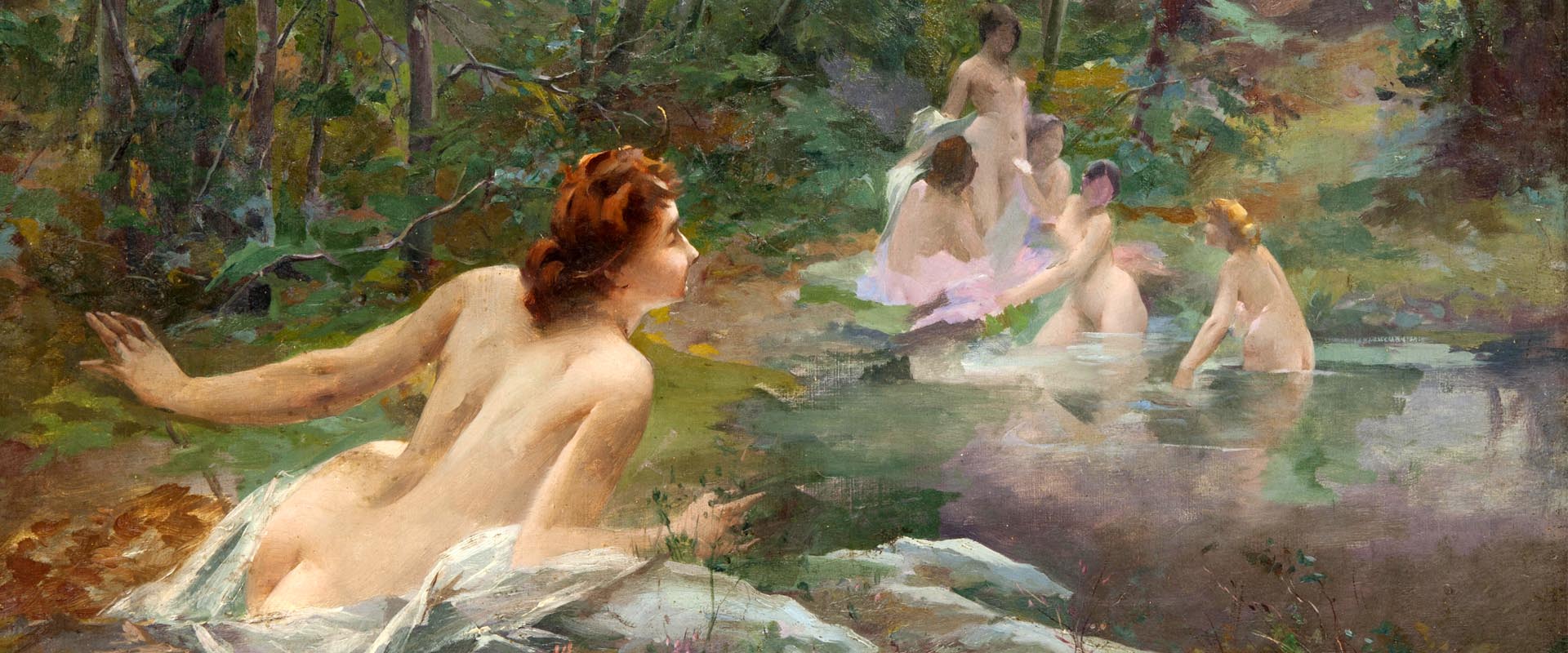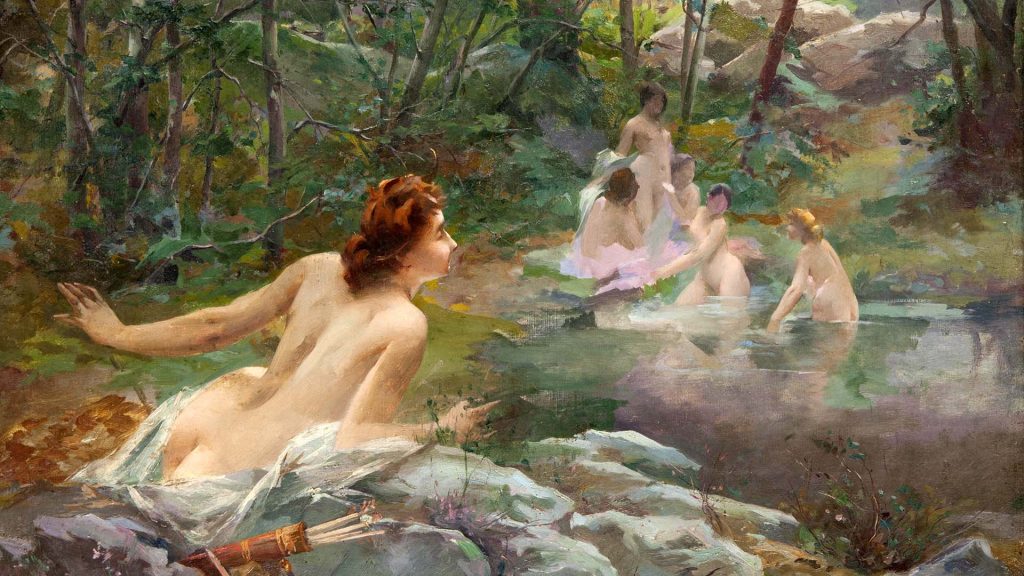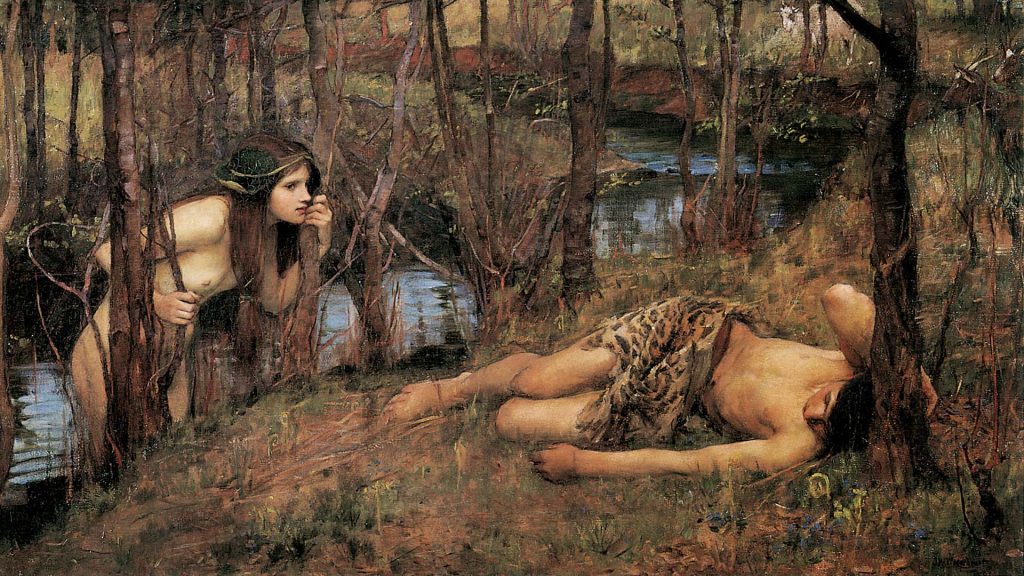The nymphs of Ancient Greece were important figures and were considered to be minor deities. The importance of the nymphs came about because of their association with elements of nature, with many nymphs associated with the vital element of water.
The water nymphs of Greek mythology can generally be split into three groups, the Oceanids, the Nereids and the Naiads. The distinctions between them is not always clear but broadly speaking, the Oceanids were the 3000 daughters of Oceanus, the Nereids were the 50 daughters of Nereus, and the Naiads were the innumerable daughters of the Potamoi.
The Nereids are the easiest of the water nymphs of Greek mythology to classify, for Nereus was a sea god, and his daughters were considered to be sea nymphs living in the Mediterranean Sea.
It might therefore appear that the Oceanids would also be sea nymphs, but in Greek mythology, Oceanus was the god of the great earth-encircling freshwater river, making the Oceanids freshwater nymphs.
As a result, there is a great deal of cross over between the Oceanids and the Naiads, for the Naiads too, were freshwater nymphs in Greek mythology. The Naiads were the nieces of the Oceanids, for the Potamoi were the river gods of Ancient Greece, and therefore sons of Oceanus.
As freshwater nymphs, the Naiads were closely associated with fountains, lakes, springs, rivers and wetlands, and as with all nymphs in Greek mythology, they were depicted as beautiful maidens, often shown with a pitcher, as the Naiads were thought to carry water for their parents.
Naiads were not necessarily considered to be immortal, for they would live and die alongside their water source, so if a spring dried up, the associated Naiad was thought to die. Naiads were also thought to have a finite lifespan, although Plutarch did suggest that this lifespan was 9720 years.
Naiads were also considered protectors of young maidens and their waters were often thought to be able to heal or aid in prophecy.
With the importance of water, it is no surprise that the Naiads were widely worshipped. Of particular importance to the Ancient Greeks were the Naiads of island springs, like Aegina and Salamis, and the Naiads of town fountains and wells, likeThespia. These Naiads, as well as giving their names to the locales, were considered to be the very reason why people could live where they did.
One of the important Pegaeae, spring Naiads, was Cassotis (or Castalia), the Naiad of the spring at the oracle of Delphi.
Tales of Naiads, Mortals and Gods
Generally speaking, the Naiads were not considered to be the most helpful of nymphs, for theywould often kidnap mortals for their own amusement (never to be seen again) and could be vengeful when angered. Legend has it that the Eleionomae (or Eleiads), Naiads of wetlands, did not need a reason to be petty, and would simply lure travelers away from the path with illusions of their loved ones. The poor mortals wouldbe lost in the swamps, never to return home again.
Naiads would often appear in the retinues of the Greek Pantheon and due to their alluring beauty, many gods would chase after Naiads. Specifically,some of the nymphs Apollo was obsessed with and pursued relentlessly were Cyrene, Daphne and Sinope, whilst Zeus pursued Aegina. Poseidon kidnapped Salamis and Hades had an affair withMinthe, who was later transformed into a plant (mint) by her lover’s jealous wife, Persephone.
At the same time though, many prominent individuals in Ancient Greece, and families, claimed thattheir family tree included at least one Naiad.
Vengeful Water Nymphs
An example of the vengeful nature of the Naiads comes from the story of Daphnis. Daphnis was a shepherd on Sicily, and a nymph fell in love with him. She was faithful to him, but a princess of Sicily deliberately intoxicated Daphnis in order to seduce him and when the nymph found out, she blinded her unfaithful lover in a fit of jealousy.
Hylas and the Naiads
Probably the most famous tale is that of a young man kidnapped by the Naiads in Bithynia. The Argo stopped off in Bithynia when the Argonauts made their way to Colchis. The local Naiadsobserved Hylas amongst the Argonauts and snatched him when he ventured away from his comrades.
The ship would sail on without him, almost leaving behind Heracles who vowed to search for his missing friend, but his search was futile.
He never found any trace of Hylas, but perhaps the young man didn’t want to be found. Some would say that he fell in love with the Naiads and decided to stay with them forever.



